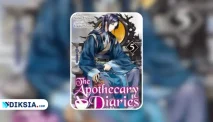Writing Style
The novel is written in the first-person point of view of Merricat, who is an unreliable narrator. She often lies or omits facts, or contradicts herself or others. She also has a childish and whimsical voice, which contrasts with the dark and serious tone of the novel.
She uses simple and direct sentences, but also employs figurative language, such as metaphors, similes, symbols, allusions, irony, etc. She also uses repetition and rhyme to create rhythm and emphasis.
The novel has a Gothic style, which is characterized by elements of horror, mystery, suspense, and atmosphere. The novel creates a sense of dread and tension, as it gradually reveals the secrets and motives behind the poisoning and the sisters’ isolation.
The novel also creates a sense of claustrophobia and entrapment, as it confines the action to the house and the village, which are both isolated and hostile environments. The novel also creates a sense of contrast and irony, as it juxtaposes the normal and the abnormal, the innocent and the guilty, the past and the present, the reality and the fantasy.
The novel has a lyrical style, which is characterized by elements of beauty, emotion, and expression. The novel uses vivid and descriptive language, which appeals to the senses and evokes images and feelings.
The novel also uses poetic devices, such as rhyme, rhythm, alliteration, assonance, etc., to create sound and music. The novel also uses symbolism and imagery, which convey deeper meanings and messages.
Pros and Cons
The novel has many pros and cons, depending on the reader’s preferences and expectations. Some of the pros are:
- The novel is original and creative, as it offers a unique and unconventional perspective on Gothic fiction and psychological thriller.
- The novel is engaging and compelling, as it keeps the reader interested and curious about the plot and the characters.
- The novel is impactful and memorable, as it leaves a lasting impression on the reader’s mind and emotions.
- The novel is insightful and meaningful, as it explores various themes and messages that are relevant and universal.
Some of the cons are:
- The novel is disturbing and unsettling, as it depicts scenes of violence, horror, and cruelty that might be too graphic or upsetting for some readers.
- The novel is ambiguous and confusing, as it leaves many questions unanswered or open to interpretation that might frustrate or dissatisfy some readers.
- The novel is unrealistic and implausible, as it relies on coincidences, exaggerations, or contradictions that might challenge or annoy some readers.
- The novel is depressing and pessimistic, as it offers no hope or resolution for the characters or the situation that might disappoint or sadden some readers.
Comparison to Other Works
The novel can be compared to other works by Shirley Jackson or other writers of horror and suspense. Some of the works that are similar to the novel are:
- The Lottery: A short story by Shirley Jackson that was published in 1948. It tells the story of a small town that holds an annual ritual where one person is randomly chosen to be stoned to death by the others. It explores the themes of tradition, conformity, violence, and human nature.
- The Haunting of Hill House: A novel by Shirley Jackson that was published in 1959. It tells the story of four people who stay in a haunted house for a paranormal investigation. It explores the themes of fear, madness, isolation, and identity.
- Rebecca: A novel by Daphne du Maurier that was published in 1938. It tells the story of a young woman who marries a wealthy widower and moves to his mansion, where she is haunted by the memory and influence of his first wife, Rebecca. It explores the themes of jealousy, obsession, secrets, and identity.
- The Turn of the Screw: A novella by Henry James that was published in 1898. It tells the story of a governess who takes care of two children in a remote estate, where she sees ghosts and suspects that the children are possessed by them. It explores the themes of ambiguity, innocence, evil, and madness.
Where To Read Novel
The novel is available in various formats and platforms, such as:
- Print: The novel can be purchased or borrowed from bookstores or libraries in paperback or hardcover editions.
- E-book: The novel can be downloaded or read online from e-book retailers or providers in various formats, such as PDF, EPUB, MOBI, etc.
- Audiobook: The novel can be listened to from audiobook services or platforms in various formats, such as MP3, CD, etc.
- Graphic novel: The novel can be viewed or read online from graphic novel publishers or websites in various formats, such as JPEG, PNG, etc.
Conclusion
We Have Always Lived in the Castle is a novel by Shirley Jackson that is a masterpiece of Gothic fiction and psychological thriller. It tells the story of the Blackwood sisters, who live in a secluded mansion after a family tragedy that killed their parents and other relatives.
The novel is narrated by Merricat, an 18-year-old girl who has a vivid imagination and a penchant for magic and superstition. She tries to protect her home and her sister Constance from any outsiders or threats, especially from their cousin Charles, who arrives at the house with ulterior motives.
The novel creates a haunting atmosphere of dread and suspense, as it gradually reveals the secrets and motives behind the poisoning and the sisters’ isolation. It also explores the themes of isolation, paranoia, guilt, family, society, and imagination.
The novel is praised for its originality, style, and impact. It is also influenced by many other writers of horror and suspense. The novel is recommended for readers who enjoy Gothic fiction with a touch of horror and mystery, unreliable narrators and twisted characters, psychological exploration of human nature and society, dark humor and irony, atmospheric and lyrical writing.
We hope you enjoyed this article and found it helpful. If you did, please share it with your friends or leave a comment below. Thank you for reading! ????






